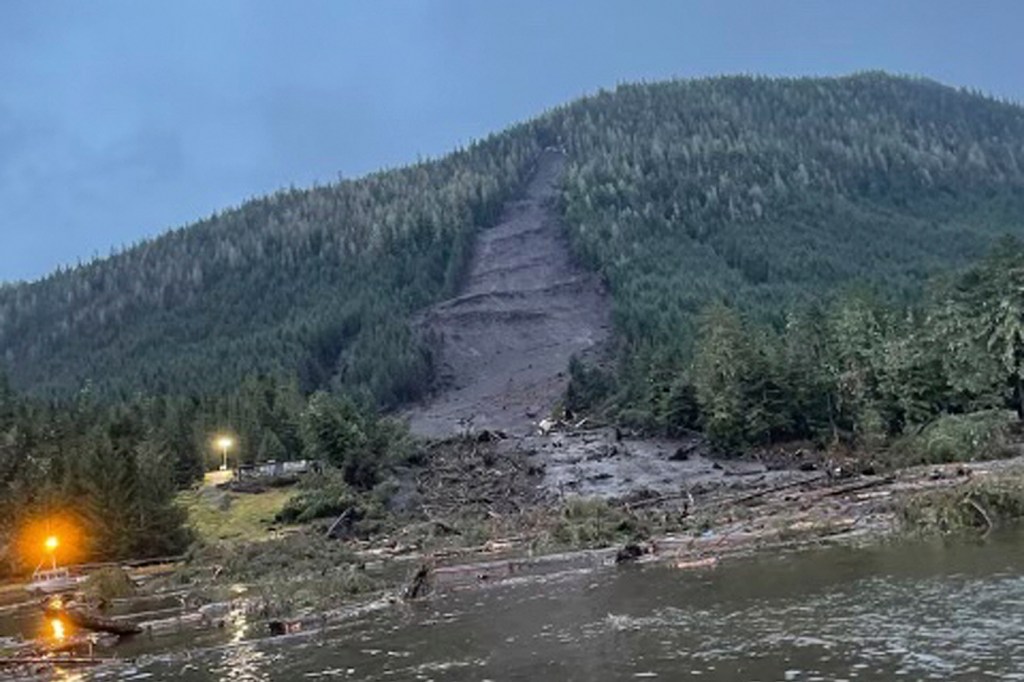Alaska landslide blamed on atmospheric river. What are atmospheric rivers and will climate change make them worse?

Editor’s note: This story was published on March 17, 2023, and updated on Nov. 22, 2023.
At least three people are dead from a landslide in Alaska on Monday, Nov. 22, that was blamed on heavy precipitation from an atmospheric river.
Experts from Northeastern University explained in a story that originally ran in January what causes these flowing streams of vapor that causing the record rains and deadly floods that have put millions of people under an evacuation order.
The experts talked with Northeastern Global News about the science behind the weather events, and whether climate change and global warming will increase the intensity of rainfall associated with these rivers in the sky.
Atmospheric rivers are responsible for ferrying fresh water from the warm tropics eastward to the Western United States, where the associated vapors condense into rain and sometimes snow.
The ‘Pineapple Express’
“There are these ribbons of very moisture laden air that extend out of the tropics,” says Samuel Munoz, assistant professor of marine and environmental science at Northeastern’s Marine Science Center and Coastal Sustainability Institute.
“When they collide with a coast, that’s the dominant mechanism by which California and much of the Western U.S. and Pacific Northwest in Canada get rain,” he says.
Because the atmospheric rivers originate in Pacific tropic areas such as Hawaii, meteorologists dub them “the Pineapple Express,” says Lindsay Lawrence, a Northeastern Ph.D. student who has bachelor’s and master’s degrees in meteorology.
“Generally speaking, atmospheric rivers are most extreme during winter months, December, January and February,” Lawrence says.
Even in a normal season, atmospheric rivers can wreak havoc.
Capable of being 300 miles wide and thousands of miles long, the moisture-laden streams can carry many times the volume of water of the Mississippi River, says Auroop Ganguly, director of the Sustainability & Data Sciences Laboratory at Northeastern.
“When these massive waterfronts—the largest transporters of freshwater on the planet Earth—hit land, they usually result in massive rain and snow events leading often to devastating floods.”

Not all atmospheric river events are catastrophic, but events such as the Pineapple Express have the ability to dump an immense amount of rain and snow in a short amount of time, according to the National Oceanic and Atmospheric Administration.
The impact of climate change
Atmospheric rivers may deliver even more rain in the future, scientists say.
“Ongoing research suggests that they may get more intense in climate change,” Ganguly says.
As the atmosphere warms, it holds more moisture, Munoz says. As with hurricanes, some research associates the increased moisture to heavier rainfalls.
Other scientists are looking into whether climate change is associated with changes in where atmospheric rivers make landfall, possibly moving southward, Munoz says.
Atmospheric rivers have cold fronts and warm fronts located off a low pressure center, Lawrence says.
As the rivers stream westward, the cold front tries to catch up to the warm front, forming a narrow band of water vapor, she says.
If the location of the low pressure shifts, the entire system will move around, Lawrence says. “To know where they are going to move is unfortunately hard to say right now.”
Munoz says it appears that catastrophic atmospheric river events occur every 100 to 200 years, with the phenomenon contributing to the Great Flood of 1862.






